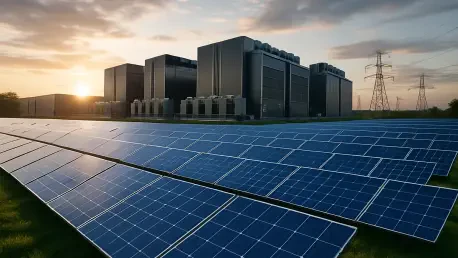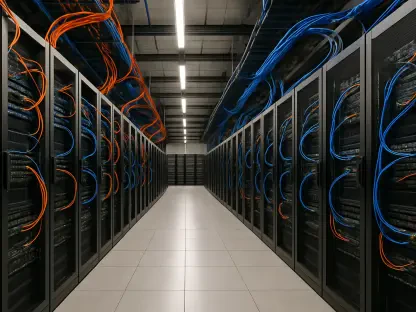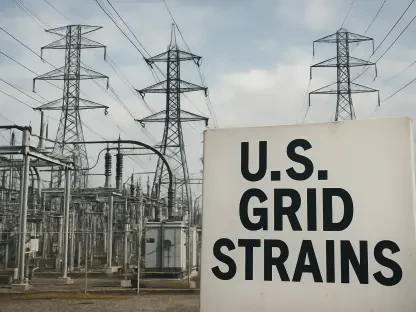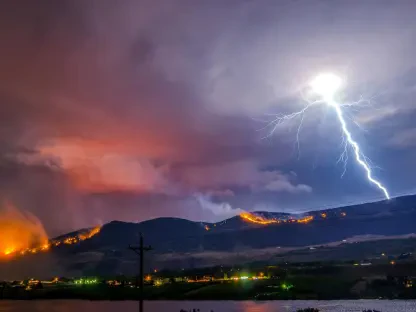As the digital age accelerates, the demand for data centers to support cloud computing, artificial intelligence, and vast online infrastructures is skyrocketing, placing unprecedented pressure on energy grids across the nation. In Montana, a state historically known for its vast landscapes and modest energy consumption, this surge presents both a transformative opportunity and a significant challenge. NorthWestern Energy, a major utility provider in the region, is at the forefront of addressing this shift, with plans to accommodate data centers that could demand up to 2,250 MW by 2030—a figure that dwarfs the company’s current average daily peak load of 760 MW. This staggering projection raises critical questions about how such massive energy needs will be met without compromising service to existing customers or straining resources. The unfolding dialogue among utility providers, regulatory bodies, and advocacy groups highlights the urgency of balancing economic growth with energy sustainability in Montana.
Addressing the Surge in Energy Demand
The rapid rise of data centers in Montana has prompted NorthWestern Energy to propose a “large load” tariff, a strategic measure designed to establish clear interconnection rules for these energy-intensive facilities. Filed with the Montana Public Service Commission (PSC), this initiative aims to manage the expected influx of at least three data centers that could collectively reshape the state’s energy landscape. The scale of this demand is staggering when compared to historical peaks of 1,300 MW, underscoring the need for robust planning. Beyond simply meeting these needs, the tariff seeks to create a framework that ensures fairness across customer classes. NorthWestern’s approach reflects a broader recognition that without proactive measures, the integration of such large loads could disrupt the stability of the grid. This proposal is not just about capacity but about setting a precedent for how utilities adapt to the evolving demands of technology-driven industries while maintaining reliability for all users in the region.
Equally significant is the regulatory oversight guiding this transition, as the PSC has made it clear that NorthWestern must adhere to strict guidelines when serving large loads. A recent ruling emphasized that the utility is obligated to inform potential customers with demands exceeding 5 MW of their right to explore alternative power suppliers. Additionally, state law requires NorthWestern to demonstrate that accommodating these data centers will not harm other customers over the long term. This directive underscores a commitment to transparency and accountability, ensuring that the benefits of economic development do not come at the expense of existing ratepayers. The PSC’s stance also pushes for a dialogue on how to equitably distribute the costs and risks associated with this growth. As NorthWestern prepares to finalize its tariff proposal, the regulatory framework will play a pivotal role in shaping how Montana navigates the intersection of technological advancement and energy provision.
Protecting Ratepayers and Ensuring Fairness
A central concern in the integration of data centers into Montana’s energy grid is the potential financial burden on existing customers, prompting advocacy groups to demand protective measures. Organizations such as the Montana Environmental Information Center, Honor the Earth, and NW Energy Coalition, represented by Earthjustice, have voiced strong support for a distinct rate class for data centers. Their argument hinges on the principle that the substantial costs tied to serving these large loads should not be passed on to residential and small business customers. Instead, they advocate for a tailored tariff that addresses specific needs, including minimum load requirements, collateral obligations, and support for low-income ratepayers. This push for fairness also extends to promoting energy efficiency and incentivizing clean energy development, reflecting a broader vision for sustainable growth that aligns with environmental priorities in the state.
Beyond cost allocation, the focus on resource adequacy remains a pressing issue as Montana braces for the energy demands of data centers. Advocacy groups have urged the PSC to require NorthWestern to prove that serving these facilities will not compromise the utility’s ability to meet the needs of existing customers before finalizing any agreements. NorthWestern, however, has indicated that assessing the full impact on resource adequacy is challenging at this stage, with updated projections for the period from now to 2031 still in development. While the company is engaged in discussions with potential data center clients, no formal commitments have been made. This uncertainty highlights the complexity of planning for such significant load increases while maintaining a reliable energy supply. The ongoing negotiations and evaluations will be critical in determining whether Montana’s grid can expand to accommodate this new era of digital infrastructure without sacrificing service quality for its current users.
Strategic Moves and Future Considerations
Looking at the broader strategic landscape, NorthWestern Energy’s planned merger with Black Hills Corp., anticipated to conclude by late 2026, emerges as a key factor in addressing the financial and infrastructural challenges posed by data center growth. This merger is partly driven by the need to bolster resources for grid expansion, as NorthWestern currently owns about 1,065 MW of generation capacity in Montana and contracts for an additional 1,070 MW. The combined strength of the merged entities could provide the necessary capital and operational capacity to support the state’s evolving energy demands. This strategic alignment reflects a forward-thinking approach to ensuring that Montana remains an attractive destination for tech industries while safeguarding its energy infrastructure. The merger’s implications extend beyond immediate needs, potentially setting a model for how utilities nationwide can adapt to similar pressures from data-driven economic shifts.
Reflecting on the path taken, NorthWestern Energy’s proactive steps to propose a large load tariff marked a significant moment in Montana’s energy history, as did the PSC’s firm stance on regulatory oversight. The advocacy for fair cost distribution and resource adequacy echoed a shared commitment to protecting ratepayers while embracing economic opportunities. As discussions progressed, the focus remained on crafting policies that balanced growth with sustainability. Moving forward, stakeholders must prioritize transparent collaboration to finalize tariff structures that equitably address the needs of all parties. Exploring innovative solutions like renewable energy integration for data centers could further align Montana’s energy strategy with environmental goals. The lessons learned from these efforts should guide future initiatives, ensuring that the state remains a leader in harmonizing technological advancement with reliable, fair energy provision for every resident and business.









